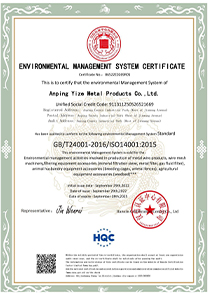Efficient Housing Solutions for Poultry Farming and Their Benefits
Nov . 26, 2024 13:08 Back to list
Efficient Housing Solutions for Poultry Farming and Their Benefits
Cages for Poultry A Comprehensive Overview
The poultry industry plays a significant role in global agriculture, contributing to food security and economic stability. Efficient management practices are essential for maximizing output while ensuring the welfare of the birds. One contentious aspect of poultry farming is the use of cages, particularly in egg production systems. The debate surrounding cages for poultry often revolves around animal welfare, environmental impact, and economic viability.
Cages for poultry can be categorized into several types, primarily conventional cages, enriched cages, and free-range systems. Conventional cages are small enclosures that typically house multiple hens. While they allow for efficient feeding and egg collection, they present significant animal welfare concerns due to their confined spaces, which limit the birds' natural behaviors such as nesting, perching, and foraging.
In response to these welfare concerns, enriched cages, also known as furnished cages, have been developed. These cages provide additional space and include features like nesting boxes, perches, and scratch areas, allowing hens to express a broader range of natural behaviors while still maintaining the benefits of a controlled environment. This system has gained popularity as a compromise that addresses some animal welfare issues while still enabling commercial production.
On the other end of the spectrum is the free-range system, which allows hens to roam outdoors during the day. This approach honors the natural instincts of the birds, enabling them to engage in behaviors such as scratching the ground and foraging for insects. However, free-range systems come with their own set of challenges, including higher costs of production, increased risk of predation, and potential exposure to diseases.
cages for poultry

The economic aspect of poultry caging cannot be overlooked. Conventional cages provide significant advantages in terms of space efficiency and cost-effectiveness. Poultry farmers who utilize these systems can raise more birds in a smaller area, leading to higher profitability. However, reinforcing animal welfare standards and shifting toward enriched or free-range systems can also lead to long-term consumer benefits. Many consumers are becoming increasingly aware of animal welfare issues and are willing to pay a premium for products that reflect higher welfare standards.
The environmental implications of poultry caging are also a critical point of discussion. Intensive production systems, including conventional cages, can lead to challenges such as waste management, pollution, and the overuse of antibiotics. In contrast, free-range systems, while more environmentally friendly in terms of promoting biodiversity and reducing waste concentration, require larger land areas and may lead to increased greenhouse gas emissions due to the more extensive feed production needs.
Policymakers and stakeholders in the poultry industry are tasked with balancing these various factors. Legislation is increasingly favoring the transition towards better animal welfare standards, with some countries enacting bans on conventional cages. The EU, for instance, has put regulations in place to phase out conventional caging systems by 2027 and promote enriched housing as the new standard.
In conclusion, the use of cages for poultry, particularly in the egg production sector, remains a complex issue intertwined with animal welfare, economic realities, and environmental sustainability. Advances in cage design, such as enriched systems, represent progress toward better welfare outcomes while still addressing the needs of producers. Ultimately, the future of poultry farming will likely see continued evolution and adaptation, driven by consumer demand, regulatory changes, and the ongoing commitment to ethical farming practices. As society's views on animal welfare evolve, the industry must adapt to create systems that prioritize the health of the birds while meeting human dietary needs efficiently.
-
Hot Sale 24 & 18 Door Rabbit Cages - Premium Breeding Solutions
NewsJul.25,2025
-
Automatic Feeding Line System Pan Feeder Nipple Drinker - Anping County Yize Metal Products Co., Ltd.
NewsJul.21,2025
-
Automatic Feeding Line System Pan Feeder Nipple Drinker - Anping County Yize Metal Products Co., Ltd.
NewsJul.21,2025
-
Automatic Feeding Line System - Anping Yize | Precision & Nipple
NewsJul.21,2025
-
Automatic Feeding Line System - Anping Yize | Precision & Nipple
NewsJul.21,2025
-
Automatic Feeding Line System-Anping County Yize Metal Products Co., Ltd.|Efficient Feed Distribution&Customized Animal Farming Solutions
NewsJul.21,2025






